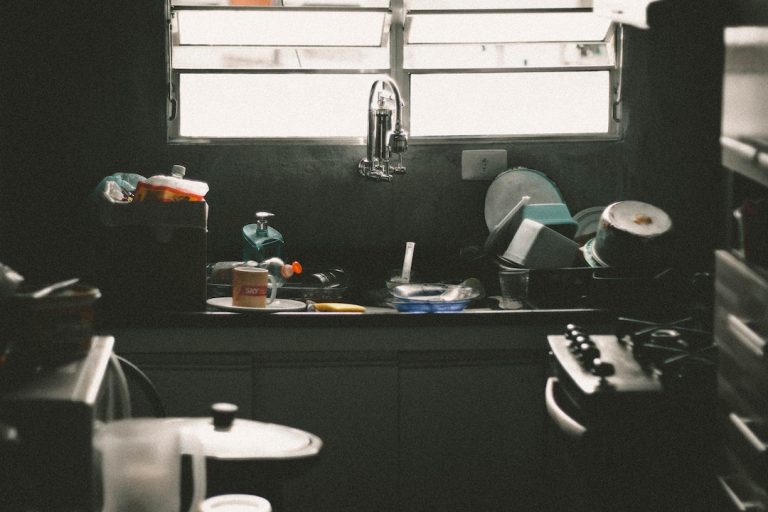Maintaining clean and healthy kitchen cabinets is essential for the overall cleanliness and hygiene of your kitchen. Using organic kitchen cabinet cleaner not only helps in keeping your cabinets free from dirt and grime but also ensures that you’re not introducing harmful chemicals into your living space. In this guide, we’ll explore how to use organic kitchen cabinet cleaner to keep your cabinets sparkling clean and toxin-free.
Understanding Your Organic Kitchen Cabinet Cleaner
Organic kitchen cabinet cleaners are gaining popularity due to their eco-friendly nature and use of natural ingredients. Understanding the components and benefits of these cleaners can help you make informed choices about which products to use in your home.
1. Natural Ingredients:
Organic kitchen cabinet cleaners typically contain natural ingredients such as:
- Vinegar: Known for its acidic properties, vinegar is effective in cutting through grease and grime on cabinet surfaces.
- Baking Soda: A mild abrasive, baking soda helps to gently scrub away stains and odors without scratching the cabinet finish.
- Citrus Extracts: Citrus fruits like lemon and orange contain natural degreasers that help to break down oil and dirt.
- Essential Oils: Essential oils like tea tree oil, lavender oil, or eucalyptus oil are often added for their antibacterial properties and pleasant fragrance.
2. Benefits of Organic Cleaners:
- Safe for Health: Unlike conventional cleaners that may contain harsh chemicals, organic kitchen cabinet cleaners are safer for your health and the health of your family. They reduce exposure to toxins and minimize the risk of respiratory irritation or allergic reactions.
- Environmentally Friendly: Organic cleaners are biodegradable and less harmful to the environment than their chemical counterparts. They don’t contribute to air or water pollution and are often packaged in recyclable materials.
- Gentle on Surfaces: The natural ingredients in organic cleaners are gentle on cabinet surfaces, making them suitable for use on a variety of materials including wood, laminate, and metal. They clean effectively without causing damage or discoloration.
3. Certifications and Labels:
Look for certifications and labels that indicate the cleaner meets certain organic or eco-friendly standards. Examples include:
- USDA Organic: Indicates that the product contains at least 95% organic ingredients and has been certified by the United States Department of Agriculture.
- EcoCert: Certifies that the product meets specific environmental and sustainability criteria.
- Green Seal: Indicates that the product has been independently verified to meet rigorous environmental standards.
4. DIY Options:
If you prefer to make your own organic kitchen cabinet cleaner, there are plenty of DIY recipes available online. These often involve simple ingredients like vinegar, baking soda, and essential oils, allowing you to customize the cleaner to suit your preferences and cleaning needs.
By understanding the natural ingredients and benefits of organic kitchen cabinet cleaners, you can make informed choices about which products to use in your home. Whether you opt for store-bought cleaners or prefer to make your own, organic options offer a safer, more environmentally friendly alternative to conventional cleaning products.
Preparing Your Kitchen Cabinets for Cleaning
Before you start cleaning your kitchen cabinets, it’s important to prepare the area properly. Begin by removing any items stored in the cabinets to ensure easy access to all surfaces. Next, use a dry microfiber cloth to dust or wipe down the cabinet surfaces, removing any loose dirt or debris.
Step-by-Step Guide to Using Organic Kitchen Cabinet Cleaner
- Shake or Mix the Cleaner Well Before Use: Organic cleaners often contain natural ingredients that may settle over time. Give the cleaner a good shake or stir before using it to ensure that the ingredients are evenly distributed.
- Test the Cleaner on a Small Area: Before applying the cleaner to the entire cabinet surface, it’s a good idea to test it on a small, inconspicuous area first. This will help you ensure that the cleaner doesn’t cause any damage or discoloration to the cabinet finish.
- Apply the Cleaner to a Clean Cloth or Sponge: Pour a small amount of the organic cleaner onto a clean microfiber cloth or sponge. Avoid using abrasive materials or scrub brushes, as these can scratch the cabinet surface.
- Gently Scrub the Cabinets: Starting from the top of the cabinet and working your way down, gently scrub the surfaces using circular motions. Pay special attention to areas with stubborn stains or grease buildup, applying a bit more pressure if necessary.
- Wipe Down with a Damp Cloth: Once you’ve cleaned the entire surface, use a damp cloth to wipe down the cabinets and remove any excess cleaner. This will help ensure that no residue is left behind.
- Dry Thoroughly: Finally, use a clean, dry cloth to thoroughly dry the cabinets. Leaving them wet can cause water damage or streaking, so be sure to remove any excess moisture.
Tips for Effective Cleaning
- Use Moderate Amounts of Cleaner: Organic cleaners are effective even in small quantities. Avoid using excessive amounts, as this can leave behind residue and require more effort to rinse off.
- Apply Gentle Pressure: To avoid damaging the cabinet surface, use gentle pressure when scrubbing with the cleaner. Let the cleaner do the work rather than forcefully scrubbing.
- Work in Small Sections: Working in small sections ensures thorough cleaning and prevents the cleaner from drying out before you can wipe it off.
- Follow Manufacturer’s Instructions: If you’re using a specific brand of organic cleaner, be sure to follow the manufacturer’s instructions for best results.
Additional Maintenance Tips
- Regular Wiping: Make it a habit to regularly wipe down your kitchen cabinets with a damp cloth to prevent dirt and grime buildup.
- Condition Wood Cabinets: For wood cabinets, consider using natural oils or waxes to condition and protect the wood from drying out.
- Address Spills Promptly: Promptly clean up any spills or stains to prevent them from becoming harder to remove over time.
Conclusion
Using organic kitchen cabinet cleaner is not only an effective way to keep your cabinets clean and hygienic but also promotes a healthier living environment for you and your family. By following the steps outlined in this guide and incorporating regular cleaning and maintenance into your kitchen routine, you can ensure that your cabinets remain in top condition for years to come.
- How to Clean Kitchen Floor Grout Naturally: Easy DIY Methods - June 25, 2024
- How to Clean Thermoplastic Kitchen Cabinets Properly: Expert Tips - June 19, 2024
- How to Clean Mica Kitchen Cabinets: A Simple Guide - June 19, 2024






